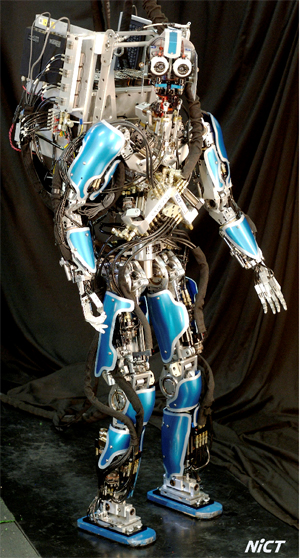As Japan’s population continues to age and shrink, more and more people are looking at robots as a way to improve productivity and support the nation’s changing lifestyles. With human-robot interactions on the rise, and with the recognition that much of human communication is nonverbal, researchers at Japan’s National Institute of Information and Communications Technology (NICT) have developed an autonomous humanoid robot they say can recognize and use body language.
According to an October 24 press release, NICT drew from research in neuroscience, cognitive science and psychology to create an android that relies on body language — i.e. gestures and touch — to facilitate natural and effective communication with humans. When used in conjunction with (or instead of) spoken communication, the robot’s body language aims to simplify communication with people likely to have trouble interacting with robots, including children, the elderly, the computer-illiterate, and people who speak other languages. NICT researchers hope the technology behind the droid’s “universal communication” skills will one day be put to practical use in robots that can work in the home or assist with rescue operations when disaster strikes.
The droid’s body language skills are due in large part to technology that allows it to observe, recognize and remember human behavior. NICT’s robot learns body language by watching — much like children, who learn nonverbal communication by watching others — and it can mimic the observed behavior with natural human-like motions. The robot also creates 3D maps of each body it observes, and it commits the map to memory. These maps allow the robot to remember how people and their bodies look, even when viewing them from different angles. In addition, the robot is equipped with delicate force control mechanisms that allow for precise motion and safe physical interaction with humans.
NICT’s press release is sketchy on the details about what exactly this robot is capable of doing. Can it learn to dance? Will it slap you on the back with the proper amount of friendly force when you tell a funny joke? Will it gently caress your shoulder when you’re feeling blue? Does it avoid eye contact in uncomfortable situations? NICT will hopefully answer these questions and more at the robot’s official unveiling on October 29.
